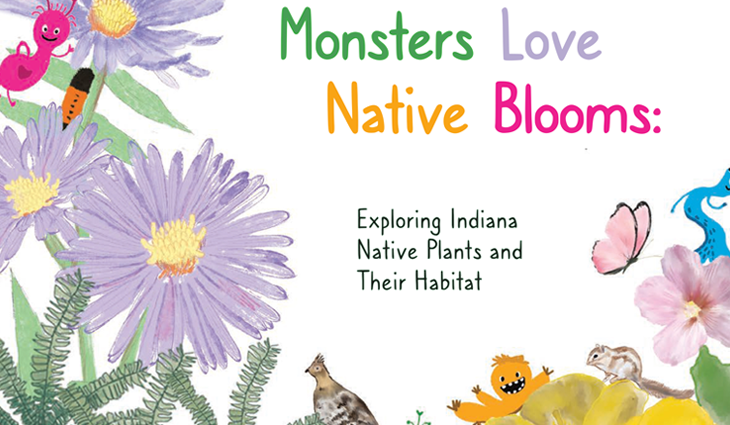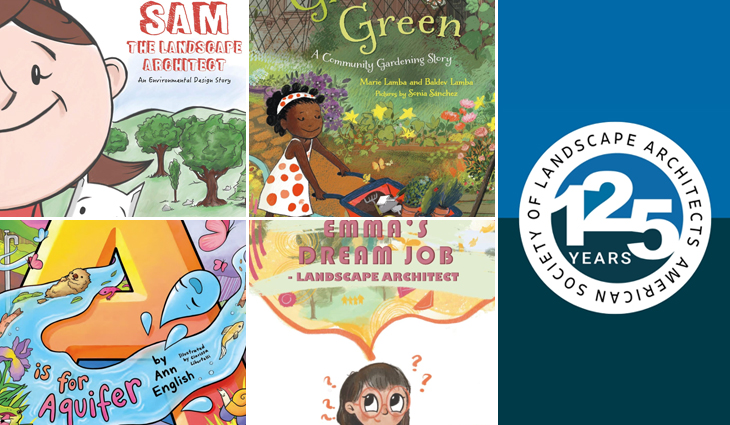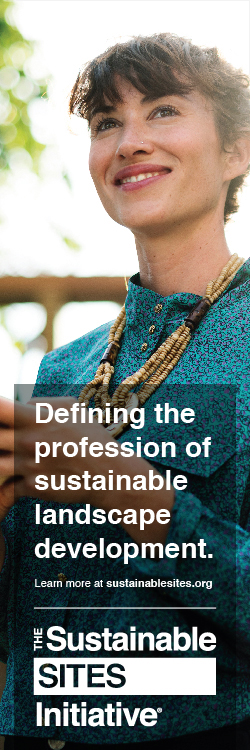New Children’s Book by Landscape Architects Added to ASLA’s STEM Literacy by Design Collection
6/3/2024Leave a Comment

Monsters Love Native Blooms by Yiwei Huang, ASLA, Chloe Kennedy, ASLA, Kayla Kramer, ASLA, Autumn McNinch, ASLA, and Molly Wimberg, ASLA
Drawing on their graduate coursework in native plants and design, five landscape architect students at Purdue University created the children’s book Monsters Love Native Blooms: Exploring Indiana Native Plants and Their Habitat.
Yiwei Huang, ASLA, Chloe Kennedy, ASLA, Kayla Kramer, ASLA, Autumn McNinch, ASLA, and Molly Wimberg, ASLA designed this 22-page children's book to help young readers learn about 12 plants native to Indiana, focusing on where they live and thrive (prairie, forest, forest edge, water edge) and the role of landscape architects and horticulturists.
ASLA Career Discovery and Diversity (CD&D) Senior Manager, Lisa J. Jennings, is eager to add Monsters Love Native Blooms to the new STEM Literacy by Design collection. This special CD&D initiative promotes literacy education to young learners using fun, poetic, and colorful books about landscape architecture.
Launched as part of ASLA’s 2024 World Landscape Architecture Month celebrations, STEM Literacy by Design has been adopted by 20 ASLA Chapters who partnered with local schools to host story time events using a toolkit of curated books provided by ASLA. Story time events emphasized key reading fundamentals that incorporated key themes, STEM concepts and standards, design principles, and picture vocabulary. Readings were followed by design charrettes and other hands-on activities that utilize outdoor design.
If your ASLA chapter would like to host a STEM Literacy by Design event with a local elementary school, sign up to participate here while supplies last.
 ASLA STEM Literacy by Design
ASLA STEM Literacy by Design
Jennings interviewed the authors to learn more about their book project work and their hopes for the publication.
What about native plants inspired you to create a children’s book?
The story all began in 2021 when we conducted a social study in a planting design class at Purdue. I invited students to interview two people they know or don't know and ask the interviewees about their perceptions of native plants. Some students interviewed their family and friends; some did this observation and interview at a local nursery store.
We found that people have a divided view towards native plants. The ones who recognize the benefits will likely utilize them in the garden, and those who do not tend to resist gaining more knowledge. So, we had this idea of teaching the knowledge of plants to children and letting them pass it on to the adults. Our aim is not to say we must grow our garden with native plants. We want people to know that different plants serve a unique niche in the ecosystem and that growing a plant in your garden is not just because they are pretty; at the same time, the plants provide habitat to other species, like insects, mammals, and provide benefits to the environment.
Describe the writing process you went through as co-authors.
We were very lucky that, in the fall semester of 2022, our senior landscape architecture program included several female students who enjoyed working with children! I hit it off with them and decided to create a picture book about plants for children aged 6 to 10 years old. We chose this age because it is a formative period of cognitive development and decision-making. During these years, children form judgments and make decisions based on their knowledge and the information around them. By introducing them to native plant species early on, the project aims to build a strong foundation of knowledge that can be expanded as they grow. The goal is to instill in young people the importance of native plants and develop a lifelong appreciation and understanding.
While a simple presentation using factual content and attractive images would have sufficed, our team recognized the value of incorporating unique characters like monsters into the book based on their own experience and the insights of the department’s consumer promotion experts. These characters are designed to evoke strong emotional responses in children, creating a connection that transforms the book from a standard educational text into an engaging story that resonates on a deeper emotional level.
Together, we formed an independent course and finished this illustrated book draft within that semester. Our editing process extended into the spring of 2023. We were able to publish it online and, by fall 2023, we were able make it available at no cost on the Purdue education store. We published the book this spring on Amazon, so now anyone can purchase physical copies. We hope it serves as an educational resource to teachers.
What do you want young readers to take away from your book?
We would like for young audiences to acquire several key concepts we emphasize in landscape architecture:
- Plants reflect your local climate! If you come from different parts of the country, you might encounter different plants every day.
- Native plants have their unique benefits to some native pollinators and other animals, and are an essential part of our ecosystem.
- Right plant, right place! Plants survive in their designated habitat, so when you bring them into your garden, they will adapt better if the conditions mimic their original habitat.
What do you want landscape architects to take away from your book?
By passing this knowledge on early in children’s education, dramatic changes can be made to native ecosystems and habitats in our local environments and promote healthier habitats from these little minds. As landscape architects, we now not only design beautiful spaces, we also need innovative applications of knowledge-based systems to spread awareness and continuously educate public society about our role and our ecologically sound design philosophy.
Access the digital publication at no cost here.
About the Authors:
- Yiwei Huang, ASLA, Assistant Professor of Landscape Architecture at Purdue University.
- Chloe Kennedy, ASLA, Previous a BSLA student at Purdue, and currently a Landscape Designer at KFM Engineering & Design
- Autumn McNinch, ASLA, Previous a BSLA student at Purdue, and currently a Landscape Architecture Analyst at Kimley Horn
- Kayla Kramer, ASLA, Previous a BSLA student at Purdue, and currently a Landscape Designer at Catalyst Design Group, PC
- Molly Wimberg, ASLA, Previous a BSLA student at Purdue, and currently a Landscape Designer at Copley Wolff Wanting Zhang, Previous a Master student at Purdue, and is going to be a Landscape Designer at MKSK
Please direct questions about ASLA’s STEM Literacy by Design Initiative and other Career Discovery and Diversity efforts to Lisa Jennings at ljennings@asla.org.


.png)
.png)
.png)
.png)
.png)
(1).png)

